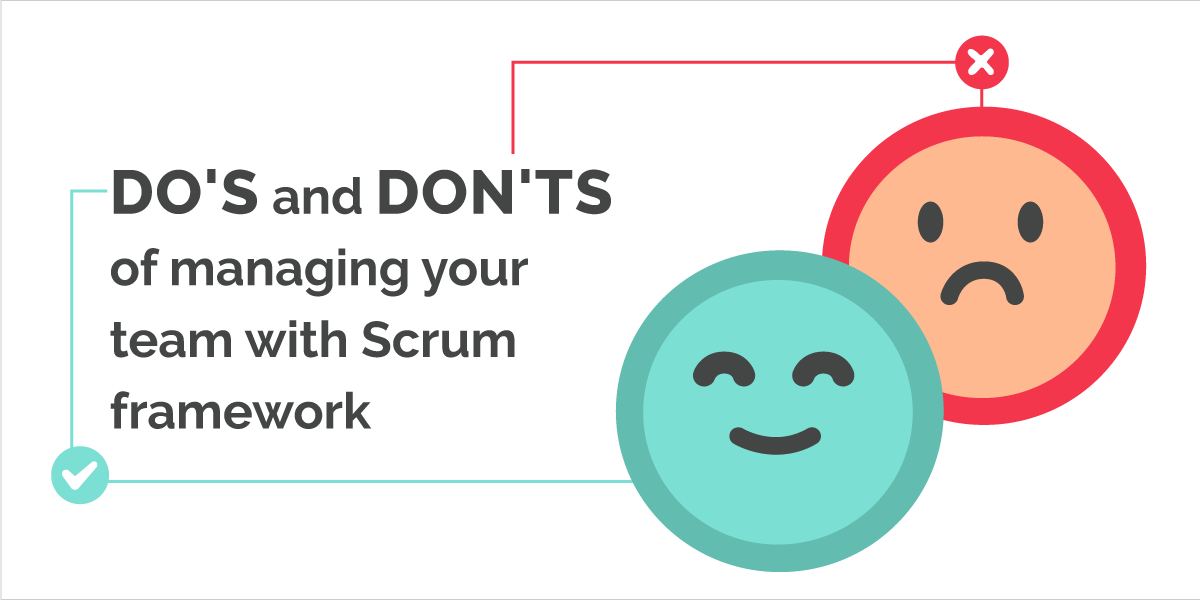You know Scrum, the very widely used agile project management method. You know Kanban, the method of production management with pull-flow. Here is Scrumban now, which will combine the flexibility provided by Scrum to Kanban’s just-in-time workflow management.
A novelty? Not really! Scrumban was born at the end of the 2000s. The use in real conditions of Scrum not being always fully satisfactory, Scrumban was initially designed to allow teams to migrate to Kanban and Lean Management. By combining the best of both worlds, a new agile methodology emerged.
Some reminders about Scrum and Kanban
In order to understand fully Scrumban’s interest in project management, let’s start by recalling some of the principles of Scrum and Kanban.
Scrum is an agile method of project management. It puts people at the heart of the project, bringing customers, users and developers to work together to realise and achieve common goals. It uses an iterative and incremental development process. The various functionalities of the product will be divided and carried out during short development phases called “sprints”, generally lasting from two to four weeks. The content of each sprint is decided in advance. At the end of each sprint, all the developed functionalities are delivered to the customer who can then test them and have them validated by its end users. The process is particularly flexible and adaptive since the scope of the project can evolve according to user feedback, thus avoiding the tunnel effect common with more conventional methods such as the V-shaped cycle or cascade model. Communications between the various participants is encouraged through “ceremonies” such as the “daily scrum” (short daily meeting allowing each member of the development team to communicate on the progress of his/her work and on the difficulties he or she may encounter) or even the retrospective, which takes place at the end of each sprint, and which makes it possible to determine the strong and weak points identified during the course of the project to determine the areas of improvement.
The Kanban method uses a slightly different approach. Rather than determining in advance the different tasks to be performed, they will arrive in a just-in-time flow. The flow will be documented by a Kanban dashboard, divided into several columns representing the follow-up workflow of realisation of a task (the stages through which it will pass in order to be carried out). A task is documented by a label (“Kanban” in Japanese) or a map (we usually use post-it tabs) which will be moved as it progresses, from the first column (“to do”) to the last (“delivered to the customer”), passing through “in progress”, “to test”, “to be delivered”… Each takes only one task at a time, and keeps it from the beginning until its complete realisation. The number of tasks that can be present in each column is limited, so as ensure never to exceed the production capacity of the project team and to obtain a smooth workflow. While Scrum works in a push flow (all tasks are determined and distributed at the start of the sprint), Kanban works as a pull-flow (each participant takes charge of a new task when he/she has finished the previous one).
Take advantage of the best of both worlds
Scrum mostly has proven itself for many years, as has Kanban. Why then try to merge these two project management methods which are in the end so very different? If the Scrum methodology is particularly attractive on paper, and all in all quite effective in real situations, its use often causes problems for the project teams. The total implementation of the method requires a full understanding of Scrum by the entire team and particularly the Scrum Master, as well as total commitment. Frequently only part of Scrum is used in the end, in order to take advantage of its flexibility, while getting rid of a certain cumbersomeness.
One of Kanban’s numerous interests is that it allows dividing the features into small unit tasks so that the evolution during the various status changes can easily be followed.
With Scrumban, the tasks to be done will arrive progressively. There is no longer any strict sprint planning. When the number of tasks to be performed falls below a certain threshold, a planning meeting is organised so that new user stories may be planned and prioritised. The iterations are still preserved, but there is no longer a defined scope of realisation. The first column containing the tasks to be performed can evolve each day. A limit on the number of tasks to be performed is set and each member of the team can only process one task at a time. When a member completes a task, he/she draws another one from the list and may begin to carry it out.
Scrumban will allow Kanban to benefit from a number of Scrum tools, such as roles and ceremonies that will ensure effective monitoring and good communications within the team. The continuous improvement process is also a pillar of Scrumban, with constant improvement of practices and procedures in place.
Scrumban, for what situations?
Prefer Scrum for a project with achievement milestones, with particularly significant structuring objectives for realisation and deliveries. Kanban will be more suited to small tasks, such as requests for support, bug fixes or small developments.
Scrumban is particularly suitable for projects for which it is difficult to predict the amount of work to be done over several weeks. How to effectively plan sprints, if the first one loads a large number of user stories, but the product backlog is not adequately powered for the next one? Scrumban combines Scrum’s flexibility and adaptability and monitoring ability with the ease of visualisation and organisation of Kanban project tasks.
To conclude concerning Scrumban
The Kanban Scrum, or Scrumban, combines the best of the Scrum and Kanban worlds to carry out an agile project. Rather than partially applying one method or another, it is better to be pragmatic and to install tools that are practical and shared by the entire project team.
Try for free for 14 days the Nutcache online Scrum software, which offers all the necessary tools to set up Scrumban within your teams.







